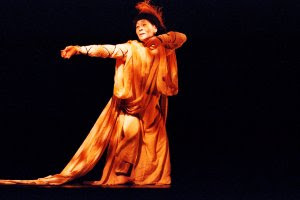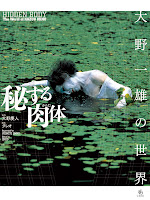The manifesto of the production: to manufacture desires, images and thoughts. In Luigi Pirandello’s Giganti della montagna, an archaic dream where the elements of life are transfigured into the theatrical rhythm
of visions, the characters ask where the truth lies. And it is the
wizard Cotrone who answers them: “It is in the magic of the theatre.”
Because the wizard is an illusionist, he knows the power of narrative
and its contemporary evolution takes into consideration the “new
scenario of technological change, fed by enlarged reality and
interactive narrative”: these are the words of Marcel.lì Antùnez Roca,
the founder of the Fura dels Baus and inventor of ‘Systematurgy’, a
working method based on interactive drama. Cotrone blends different
genres (theatre, dance, music, visual arts, cartoons) and language with a
high technological density, in a single form. Software developed for
this project makes it possible to manage and interact with devices and
robots, lighting, images, music and sound.
with Alessandro Lombardo, Ettore Scarpa
directed by regia Marcel.lì Antunez Roca
assistant director Vanessa Vozzo
Il Mutamento Zona Castalia (Italy)/ Panspermia S.L. (Spain) / Virtual
reality & Multi Media Park (ASA Lab)/ CIRMA Centro
interdipartimentale di Ricerca su Multimedia e Audiovisivo (Italy)/
Servi di scena opus rt (Italy)/ Festival Temporada Alta (Spain)
with a contribution from Regione Piemonte/ with the support of Sistema
Teatro Torino/ with the collaboration of Fondazione del Circuito
Teatrale del Piemonte
in collaboration with Turin Polytechnic – Degree Course in Cinema and
Media Engineering / Laboratorio Multimediale “Guido Quazza”



